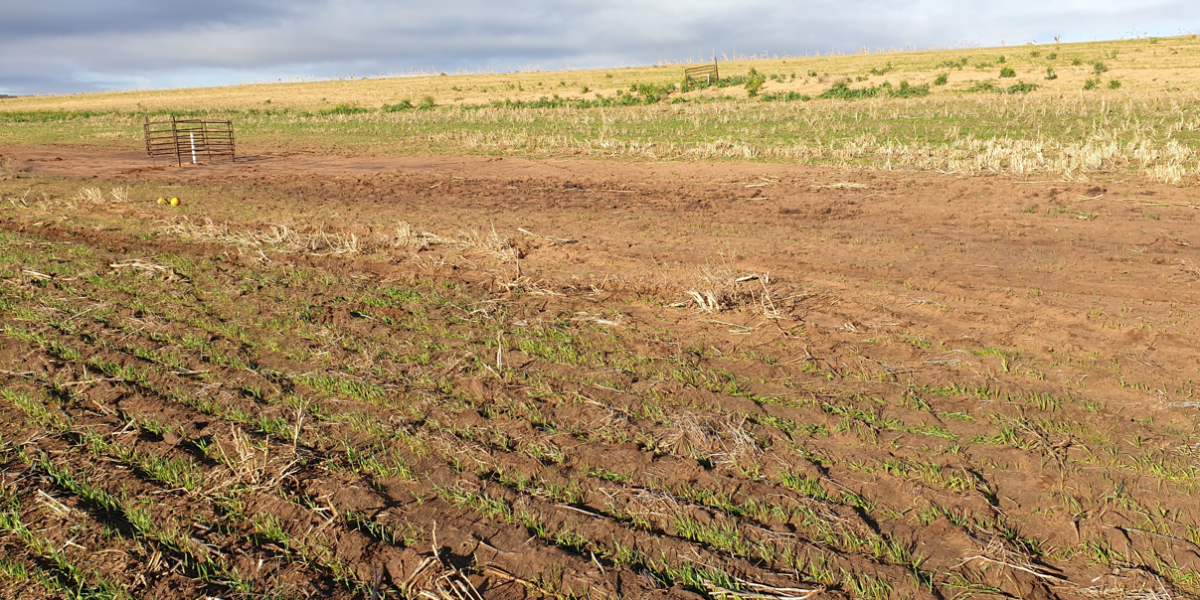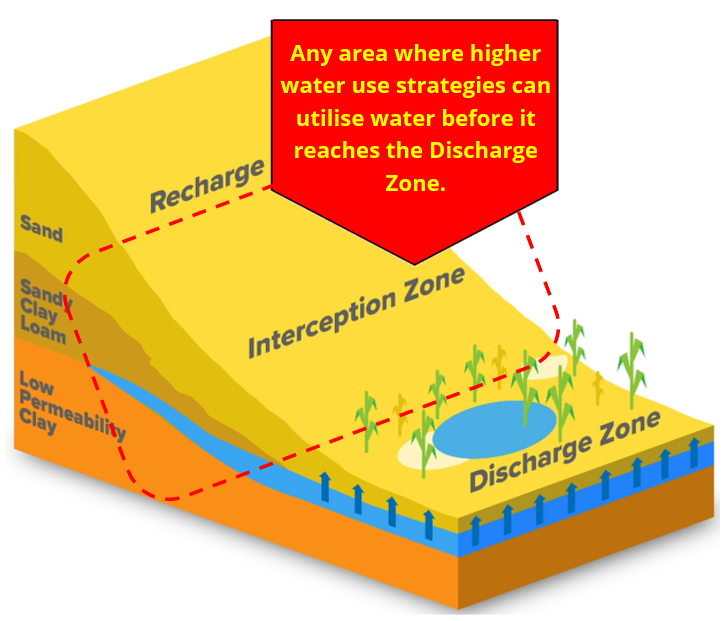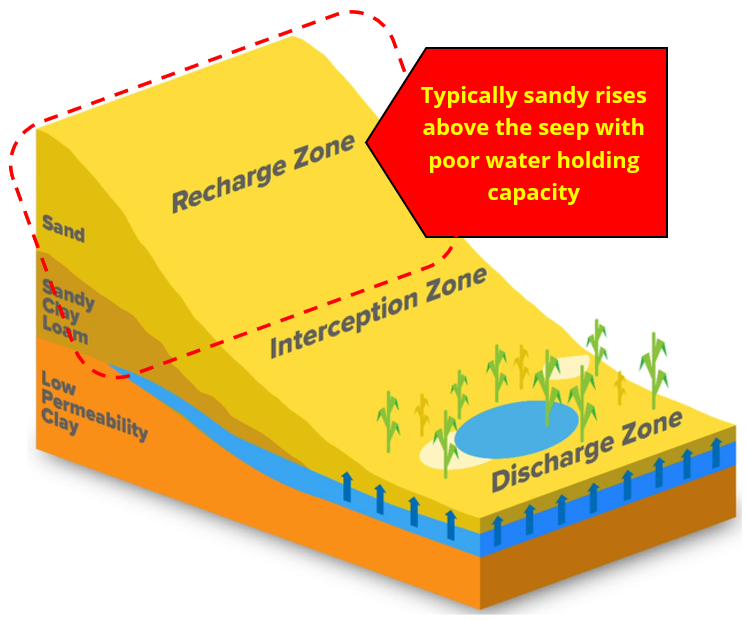Development Phase
Intermediate Moderate Phase
Water Salinity Level
Low to Medium Salinity
Key Comments
While scalded areas are relatively small and topsoils at a less toxic stage, full restoration is possible provided immediate steps are taken to stop the excess water flows.

Discharge Zone Management

There are 3 paths that can be taken on the discharge zone, depending on the site situation and the farmers management preferences.
One option is to establish puccinellia / tall wheat grass on developing bare patches to maintain perennial cover and restore topsoil health within a few years. This will be dependent on reducing the flow of water into the seep zone to lower or dry out the perched water table. The area can be maintained for permanent cover and grazing, or turned back to crop production once topsoil is back to health.
Interception Zone Management

Recharge Zone Management

Any deep sand amelioration with ripping, spading, delving, claying and the mixing in of manures or other organic matter etc, resulting in higher water retention and plant water utilisation will have a positive impact on reducing recharge, but will not have as dramatic affect as the water interception achieved with deep rooted perennials.
If it works for your farming system and paddock and you get a season with favorable conditions, then establishing lucerne over a larger portion of the recharge zone will significantly increase the rate at which the perched water table dries up and ceases to be affected by high rainfall periods and events.

